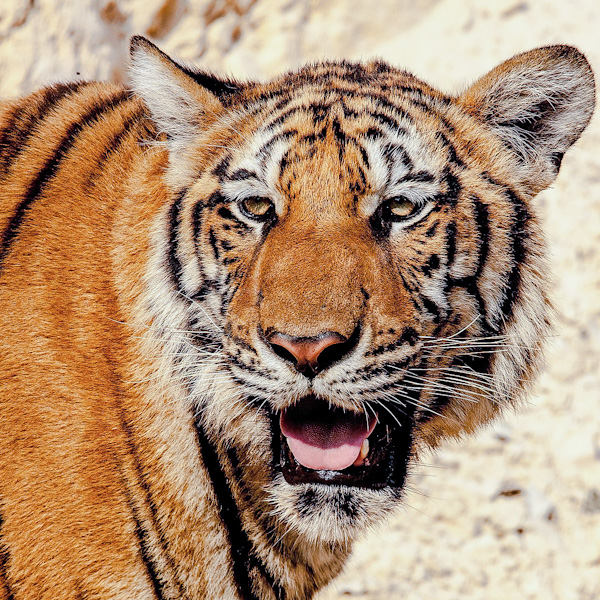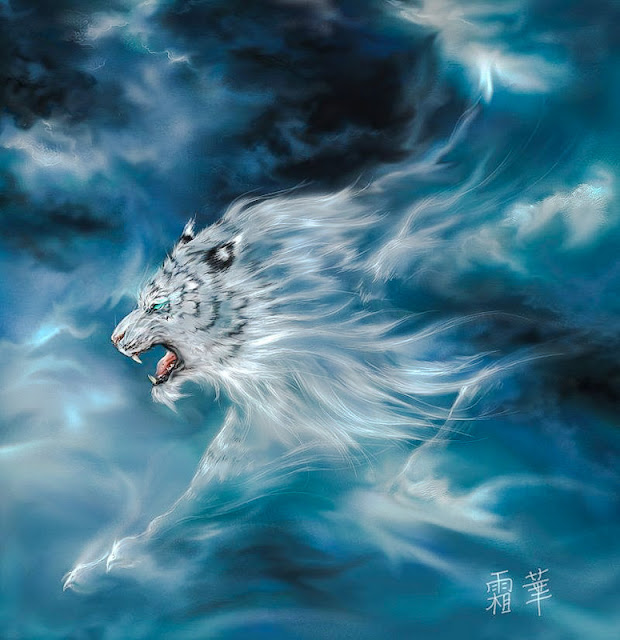How do tigers play?
I believe that you can answer the question in the title quite scientifically. I'll try. We know how domestic cats play. The domestic cat is a domesticated North African wildcat. The wildcat is just another species of wild cat as is the tiger. So inherent in all wild cat species is the ability to enjoy playing. It doesn't matter whether you are a huge tiger or a small wildcat in Africa. To repeat, it is innate in them to enjoy playing. This is because it's both entertaining and a form of play-hunting. Note: the scientific books on the tiger don't mention playing. We have rely on YouTube and common sense!
 |
| Big Cat Rescue white tiger playing. Video screenshot. |
It's a substitute for hunting. And this is probably another point worth making. You will see tigers playing, as you can see in the video, in captivity. In fact zookeepers are obliged to find ways to encourage their tigers to enjoy playing because it's the only way they can substitute the natural behaviour of hunting. It doesn't take a lot of stimulation to get them to play. The Big Cat Rescue video kinda shows that. They coat the plastic toy with pheromones: perfum and human body scent. Big cats can also like catnip.
Another video shows a man somewhere in Asia who has adopted a tiger as a domestic cat. The tiger behaves somewhat like a domestic cat which includes playing in the kitchen with a plastic container. The animal even jumps up onto the kitchen counter. Naughty!
 |
| Screenshot from video of tiger playing on kitchen counter. |
As a tamed, partially domesticated or captive animal they are more likely to demonstrate this common cat behaviour be they wild cats or domestic cats or in between. The second question really is whether you see this in the wild so much. In the wild you will see young tigers playing both amongst themselves and with their parents. But I don't recall seeing adult tigers in the wild playing. The reason? It's because they don't have to substitute play-hunting for the real thing because the real thing is on their doorstep. It is their work. They do it nearly every day because they have to and they risk their lives when they pull down large prey animals.
They are unlikely to be motivated to mess around once they get back "home" unless, of course, their cubs jump all over them and irritate them.
In the Big Cat Rescue video, you see a tiger-sized toy (3-4 guys carry it). It is made of plastic which it has to be to withstand the ferocity and strength of the tiger. But this presents a danger to the tiger because bits of plastic get ripped off which can be eaten. It is also said, incidentally, that play toys for all cats should be destructible (to mimic real prey) and therefore in an ideal world this oversized tiger toy should be made of something which can indeed be destroyed in one hit. The problem is it will be just too expensive to keep replacing them! But destructible toys are more interesting to tigers.
The cost is especially important currently as Big Cat Rescue is going through a particularly hard time financially having lost $1 million over the past year due to the coronavirus lockdown/restrictions in Florida, USA and the wider USA. These sorts of attractions are in dire straits financially because they are not getting any visitors.




Comments
Post a Comment
Please comment.